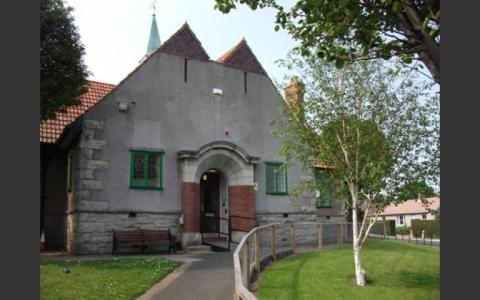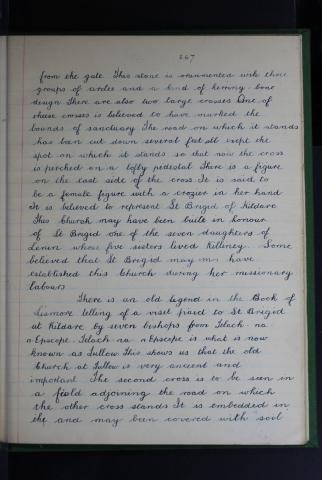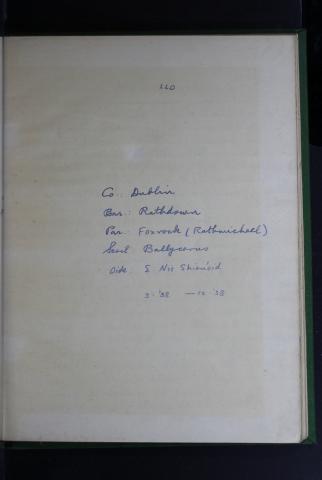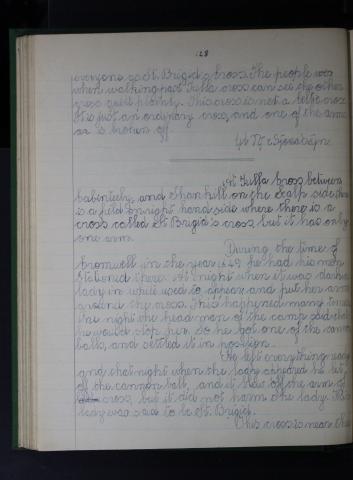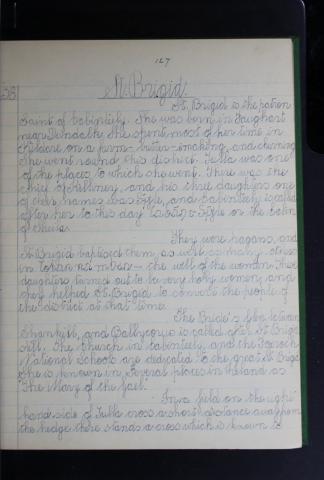St.Brigid's Day: Local Memories from the Schools Collection
St. Brigid's Day: Local Memories from the Schools Collection
The Schools Collection is a collection of folklore written up by Irish pupils from 5,000 primary schools between 1937 and 1939.The children were asked to collect folktales, information about their area and other interesting knowledge. They gathered this information by talking to their parents, grandparents and neighbours.
The collection is held in the Folklore Collection in UCD and digitised here
Schools in the area now covered by Dun Laoghaire Rathdown were included in this collection:
Dun Laoghaire, Dalkey, Glasthule, Blackrock, Kiltiernan, Dundrum,Sandyford, Killiney, Shanganagh, Ballycorus & Foxrock
The children brought back stories of St. Brigid, of her connection with the area and the traditions around her feast day. This is a selection of the tales they told.
Collected by Lil Ní tSíoradáin St. Brigids School, Foxrock 1937/38
St.Brigid is the patron Saint of Cabinteely. She was born in Faughart near Dundalk. She spent most of her time in Kildare on a farm - butter-making and churning. She went round this district. Tulla was one of the places to which she went. There was the chief of Killiney, and his three daughters, one of their names was Síghle, and Cabinteely is called after her to this day- Cabán t-Síghle or the Cabin of Sheila. They were pagans and St. Brigid baptised them as well as many others in Tobar na mBan - the well of the women. These daughters turned out to be very holy women and they helped St. Brigid to convert the people of the district at that time.
The Bride's Glen between Shankill and Ballycorus is called after St. Brigid still. The Church in Cabinteely and Foxrock National Schools are dedicated to the great St. Brigid. She is known in several places in Ireland as " The Mary of the Gael ".
In a field on the right hand side of Tulla Cross a short distance away from the hedge there stands a cross which is known to everyone as St. Brigid's Cross. The people when walking past Tulla Cross can see the other cross quite plainly. This cross is not a Celtic cross. It is just an ordinary cross, and one of the arms is broken off.
Collected by Nuala Ní Chaoimh St. Brigids School, Foxrock 1937/38
At Tulla Cross between Cabinteely and Shankill on the Scalp side there is a field on the right hand side where there is a cross called St Brigid's cross, but it has only one arm. During the time of Cromwell in the year 1649 he had his men stationed there. At night when it was dark a lady in white used to appear and put her arm around the cross. This happened many times. One night the head man of the camp said that he would stop her. So he got one of the cannon balls, and settled it in position.
He left everything ready and that night when the lady appeared he let off the cannon ball, and it blew off the arm of the cross, but it did not harm the lady. This lady was said to be St. Brigid. This cross is near the ruins of a church built on the spot where St. Brigid founded a convent, and it is very very old. Maybe St. Brigid herself got it made. A few yards out from the cross there is a beaten track which is thought to be caused by the people doing the round of the cross.
The Church of St. Brigid of Tullagh
Ballycorus School, 1938
Not far from Rathmichael on a road leading northward across the Heron Ford at the head of the Bride's Glen there is the ruins of an old church called the Tullow Church. This Church was known long ago as "The Church of St Bridgid of Tyllaght" from the gate. This stone is ornamented with three groups of circles and a kind of herring-bone design. There are also two large crosses One of these crosses is believed to have marked the bounds of sanctuary The road on which it stands has been cut down several feet all except the spot on which it stands so that now the cross is perched on a lofty pedestal There is a figure on the east side of the cross. It is said to be a female figure with a crozier in her hand. It is believed to represent St Brigid of Kildare. This Church may have been built in honour of St Brigid one of the seven daughters of Lenin whose five sisters lived Killiney.
Some believed that St.Brigid may have established this Church during her missionary labours There is an old legend in the Book of Lismore telling of a visit paid to St.Brigid at Kildare by seven bishops from Telach-na-n- Epscope. Telach-na-n Epscope is what is now known as Tullow. This shows us that the old Church at Tullow is very ancient and important The second cross is to be seen in a field adjoining the road on which the other cross stands. It is embedded in and may been covered with soil at one time
News
View all
dlr Libraries News and Events January and February 2026
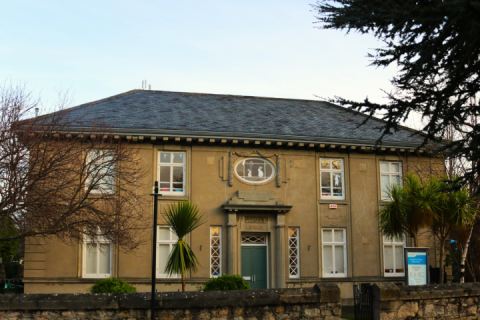
Temporary Closure of Dundrum Library
